Top 7 Doi Tung Attractions (2025)
Nestled within the majestic Chiang Rai province, Doi Tung is a remarkable destination that offers a blend of natural beauty, cultural richness, and sustainable initiatives. At an elevation of 1,389 meters, visitors can explore the enchanting Doi Tung Royal Villa and the mesmerizing Mae Fah Luang Garden, where vibrant flora and intricate landscapes captivate the senses. Unravel the area’s history and marvel at the architectural wonder of the revered Wat Phra That Doi Tung temple. As you immerse yourself in the scenic mountain views and local craftsmanship, experience firsthand the region’s commitment to sustainable community development, transforming Doi Tung into a must-visit destination for eco-conscious travelers.
Doi Tung is a cultural and scenic ride known for its royal villa, flower gardens, and winding mountain road. The route combines steady climbs with shaded bends and occasional mist in cooler seasons. Villages along the way provide rest stops, but parking near the gardens can be tight on weekends. To enjoy both the ascent and descent safely, many visitors choose our motorbike rental service for this ride.
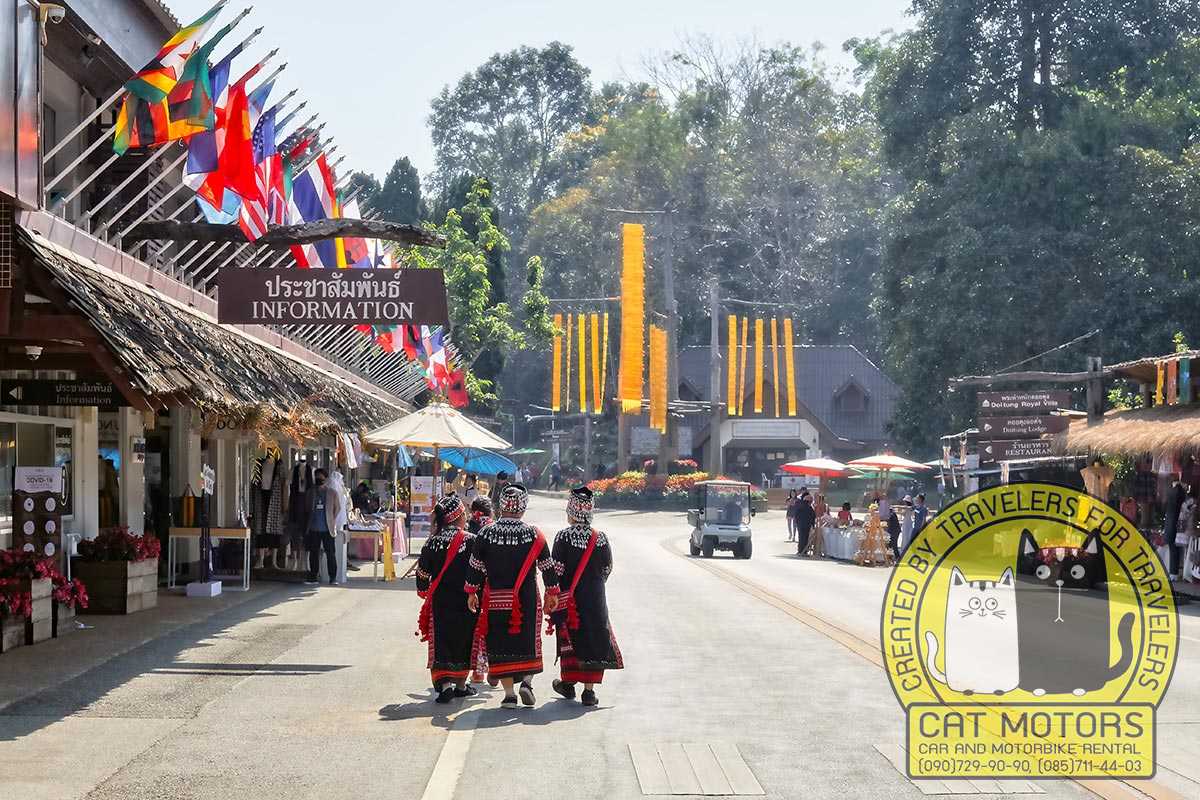
Doi Tung (Thai: ดอยตุง, doi dtung) is a mountain in northern Thailand considered one of the main tourist attractions in Chiang Rai province and is known for its beautiful garden, tea and coffee plantations, and royal project to improve the lives of hill tribes. The Mae Fah Luang Garden is the most beautiful flower garden in Northern Thailand. There is also one of the most important temples of Chiang Rai, which was built on top of the mountain in the 10th century and is a place of worship for those born in the year of the Pig, according to the Chinese zodiac, bringing them good luck.
This place was once severely damaged by deforestation. Nevertheless, thanks to people’s efforts, it has become the most outstanding tourist attraction of Chiang Rai, and many tourists visit Doi Tung every year.
Location: Mae Sai District (Thai: แม่สาย, mâe-săai), Chiang Rai Province (Thai: เชียงราย, chiiang-raai)
Population: about 11,200 people, consisting of various tribes including Akha, Lahu, Tai Lue, and Lawa
Elevation: 1389 m (4557 ft)
Mountain range: Daen Lao Range
Latitude: 99.834362
Longitude: 20.326003
Altitude: 1,389 m (4,485 ft)
GPS: 20°19’33.6″N 99°50’03.7″E
History of Doi Tung Development Project
Doi Tung Palace began construction on December 26, 1987, when Her Royal Highness Princess Srinagarindra Mahidol, mother of King of Thailand Rama IX, reached 88. However, before this, she made a royal notice that after her 90th birthday, she would no longer visit Switzerland, which she loved so much for its unique climate and natural beauty. For this reason, Her Royal Highness’ Chief Private Secretary chose Doi Tung Mountain for the Princess Mother’s consideration as an alternative where she could live and relax in nature without leaving the Kingdom of Thailand.
After inspecting the site in early 1987, the Princess Mother gave her consent for the construction of a summer residence. In addition, she gave royal orders to begin reforestation of the mountain, which led to the creation of the Doi Tung Development Project, which then led to the establishment of coffee plantations and tea plantations.
The development project began with the help of all relevant government agencies, such as the Royal Forest Department, the Royal Irrigation Department, and other. In addition to reforestation, the project also provides vocational training and education to improve the quality of life of local ethnic groups living on the mountain, including the Akha people, Lahu, Tai-Yai, and Chin-ho peoples. In doing so, the project also seeks to preserve the traditions and culture of the hill tribes.
Things To Do
Let’s explore this fantastic area and find out why is so important to the locals of Chiang Rai province and everyone in Thailand!
Doi Tung Palace
Doi Tung Palace, also called Doi Tung Royal Villa, was the primary residence of the late Her Royal Majesty Princess Mother, built in the Mae Fa Luang district at her personal expense.
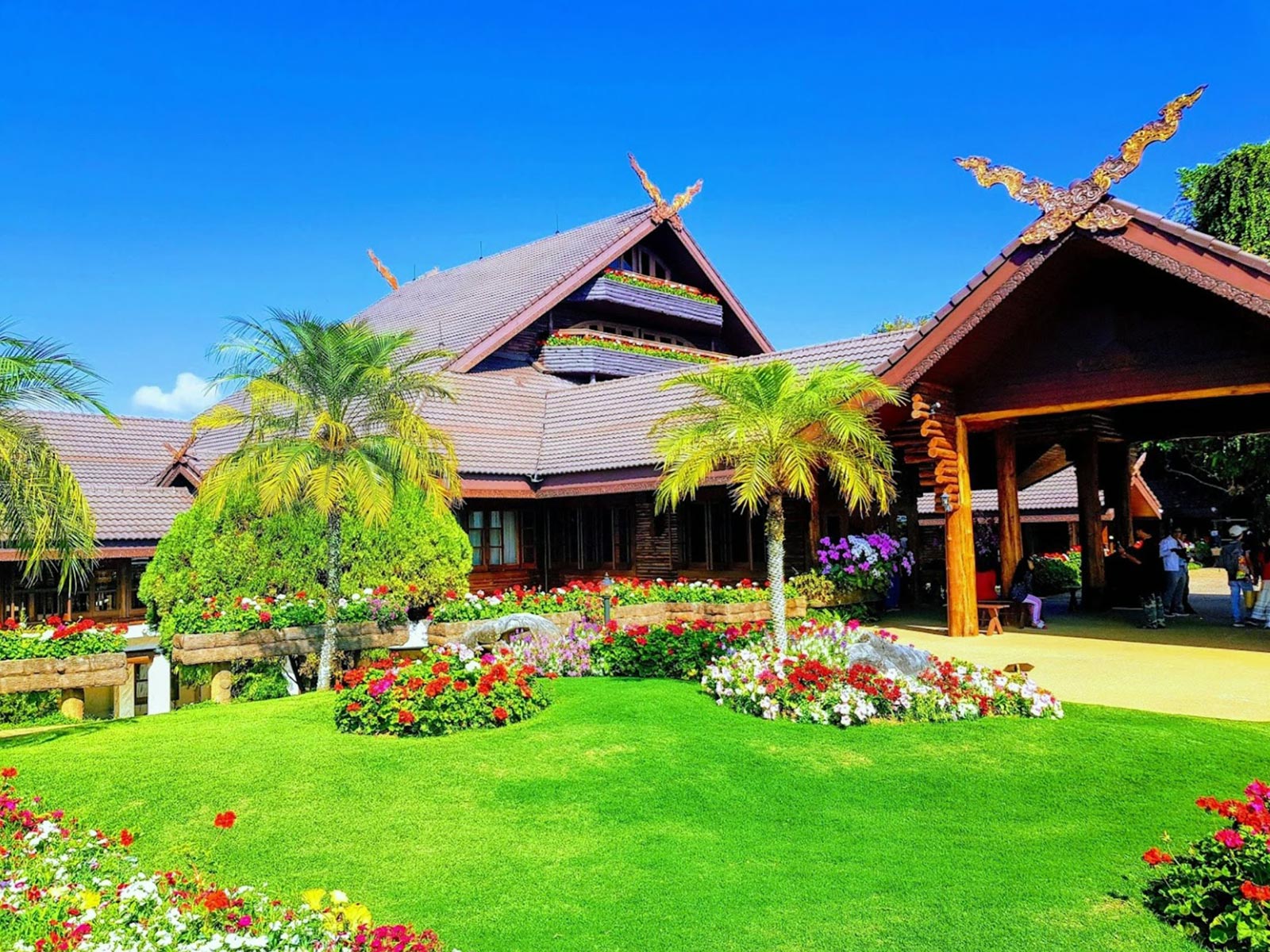
The villa was built in the eclectic Lanna-Swiss chalet style, with a night sky ceiling studded with stars in the main hall. At the back of the residence is a balcony stretching outward. Standing on the terrace you can enjoy the beautiful views and magnificent scenery of the surroundings.
The Royal Villa Doi Tung is open to tourists all year round. However, you must be accompanied by an official palace guide when visiting this place. All guests visiting the site must wear appropriate modest clothing covering the body, shoulders, and knees. No video or photography is allowed in the palace.
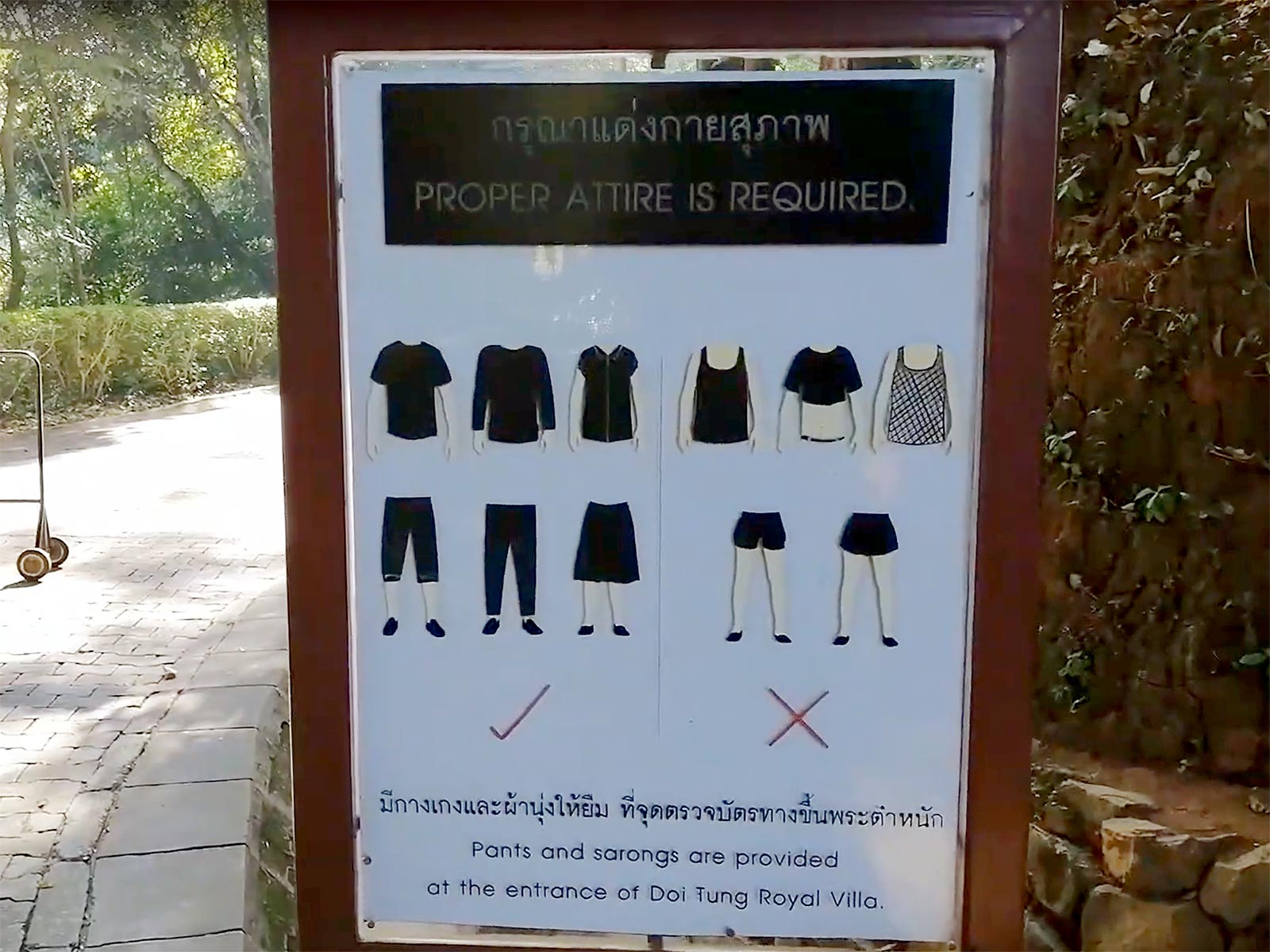
Opening Hours:
Every day from 07:00 AM – 05:30 PM
Facility Maintenance Fee:
90 THB, 50% discount for older people and students
Mae Fah Luang Garden
The Mae Fah Luang Garden, also called Suan Doi Tung, is a 25 rai (9.88 acres) nature park located in front of the palace.
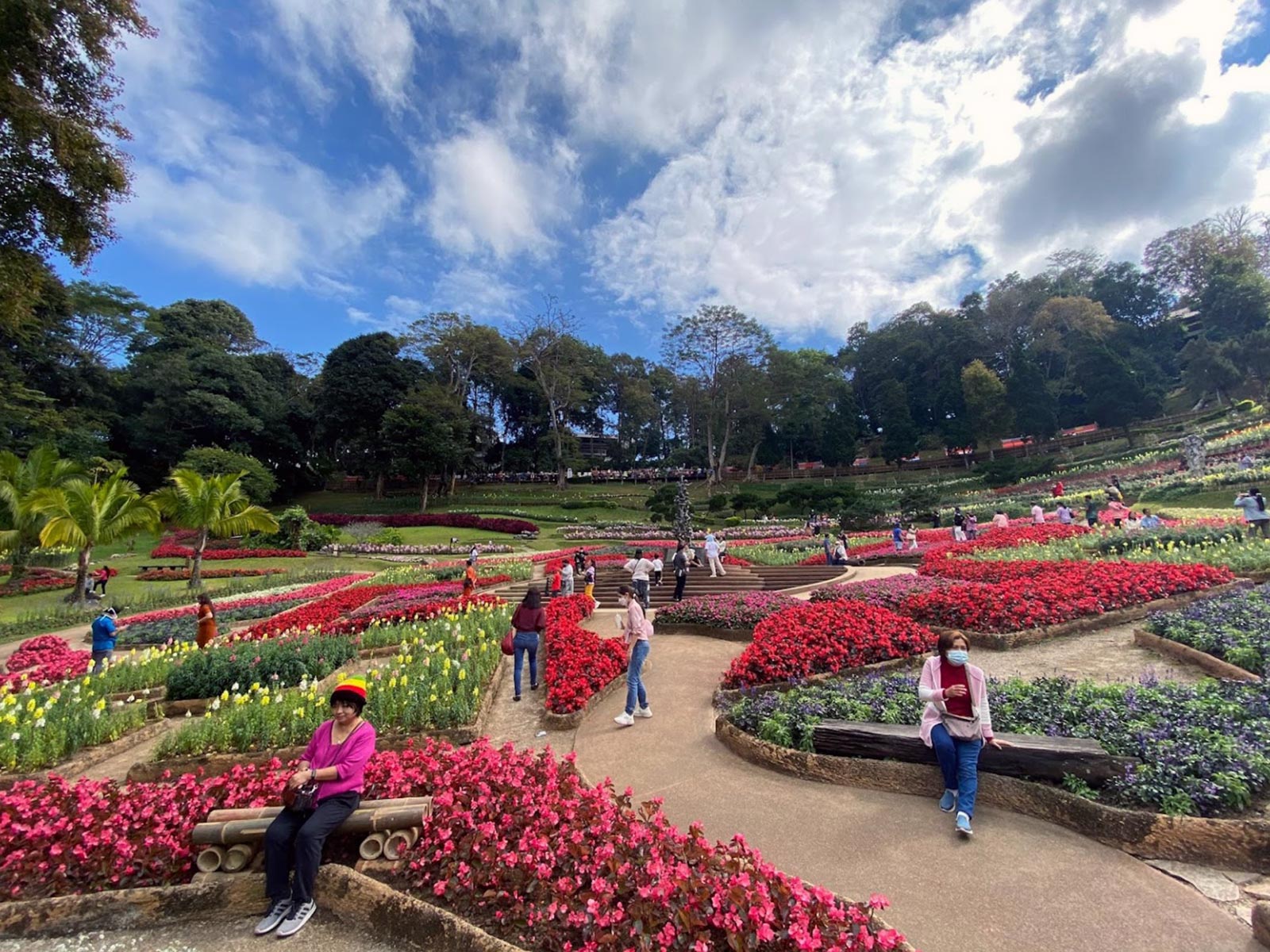
Founded in 1991, the park is decorated with various colorful plants and flower beds that take turns blooming all year long. In the middle of the garden is a statue of children playing on a human ladder, bestowed the name Continuity.
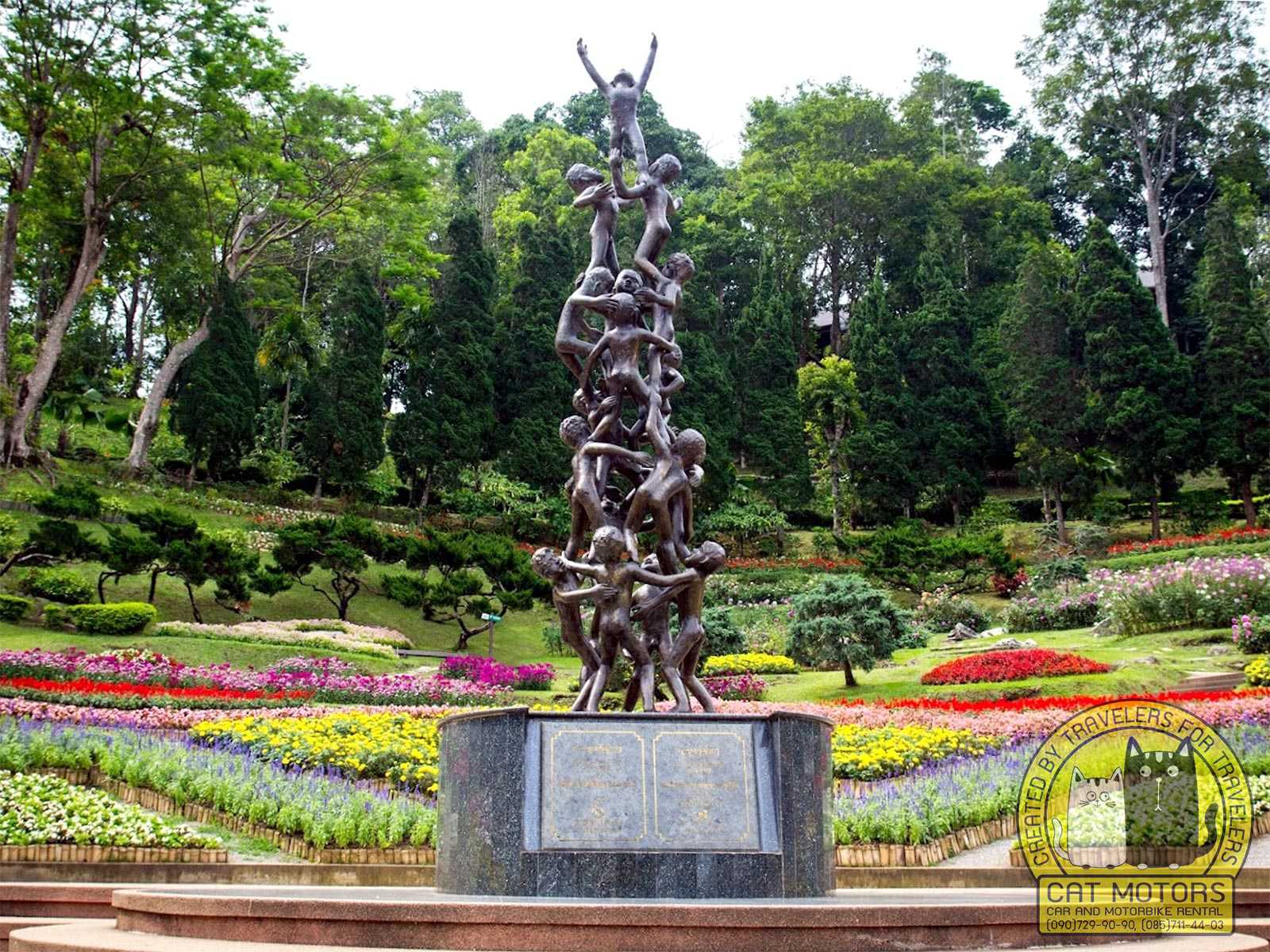
In addition to outdoor plants, there are greenhouses of indoor plants and flowers, the highlight of which is Venus slipper orchids that produce alluring flowers. There’s also a café for weary visitors, which uses coffee beans sourced locally from the Doi Tung coffee plantation.
Opening Hours:
Every day from 06:30 AM – 06:00 PM
Entrance Fee:
90 THB, 50% discount for older people and students
Hall of Inspiration
The former Royal Biography Hall, located at the front of Doi Tung Palace, has been reconstructed into the Hall of Inspiration. This is where the royal biography exhibition of Her Royal Highness Princess Mother Srinagarindra and the royal family is displayed.
Exhibit 1: Mahidol Royal House
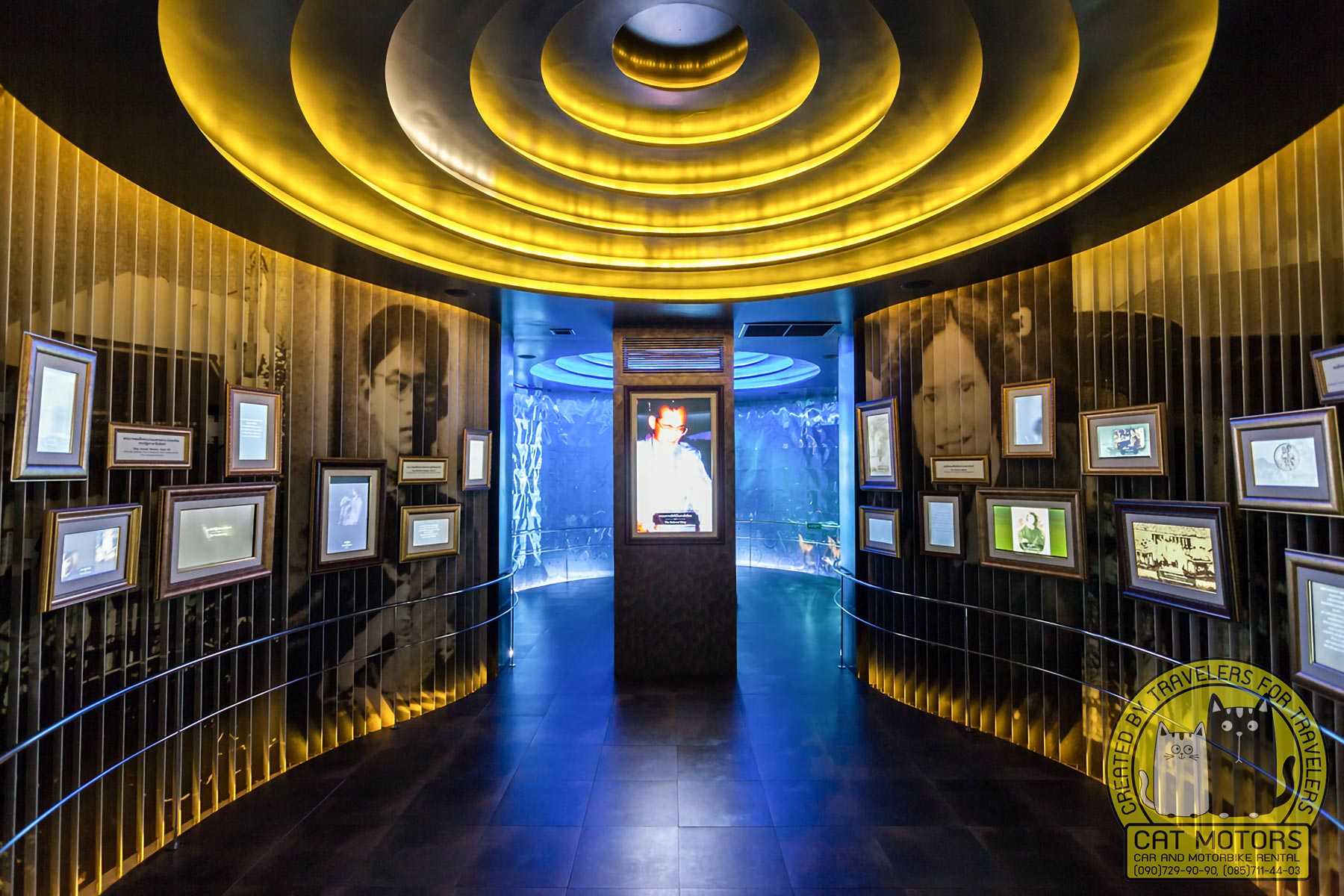
Coming from a small but loving family, the princess mother was like drops of water falling from the sky, flowing through the lands, washing away people’s suffering and restoring their happiness.
Exhibit 2: History of the Royal House
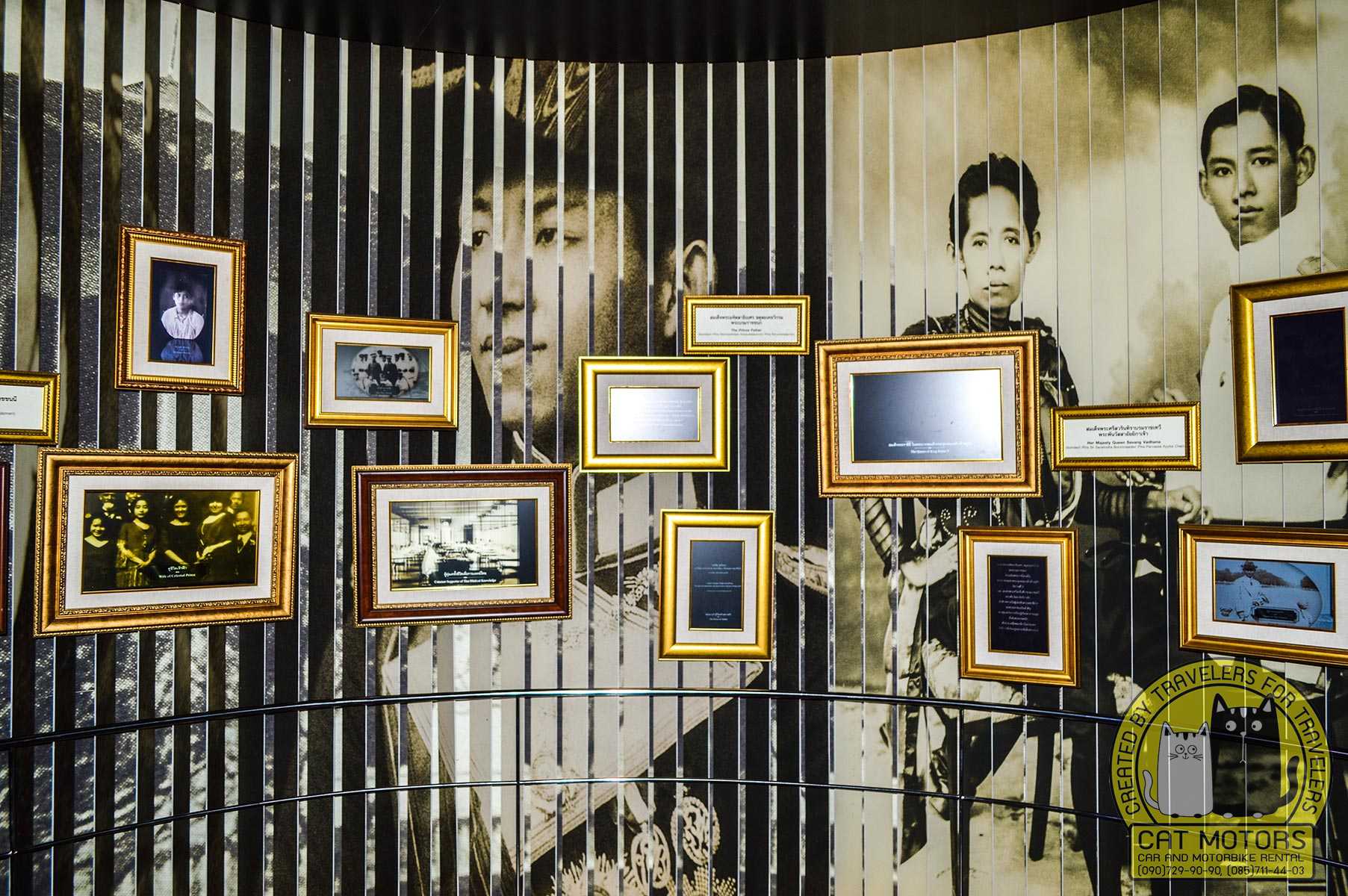
The Royal Biography shows that all great deeds begin with small things. This exhibition presented the story of the Princess Mother when she was a “Sangwan Talapat”, a good-hearted girl with big dreams. Later, she became the “Prince’s Soulmate” who followed her passion and worked for the betterment of the country. Then she became a “Loving Mother” who showed principles in raising her children to “be a full human being”. Finally, she was awarded the title of Mae Fah Luang “Heavenly Royal Mother” by the Thai people for her contribution to helping people who were suffering so that they could have a chance at a better life.
Exhibit 3: The Royal House’s Return to the Motherland
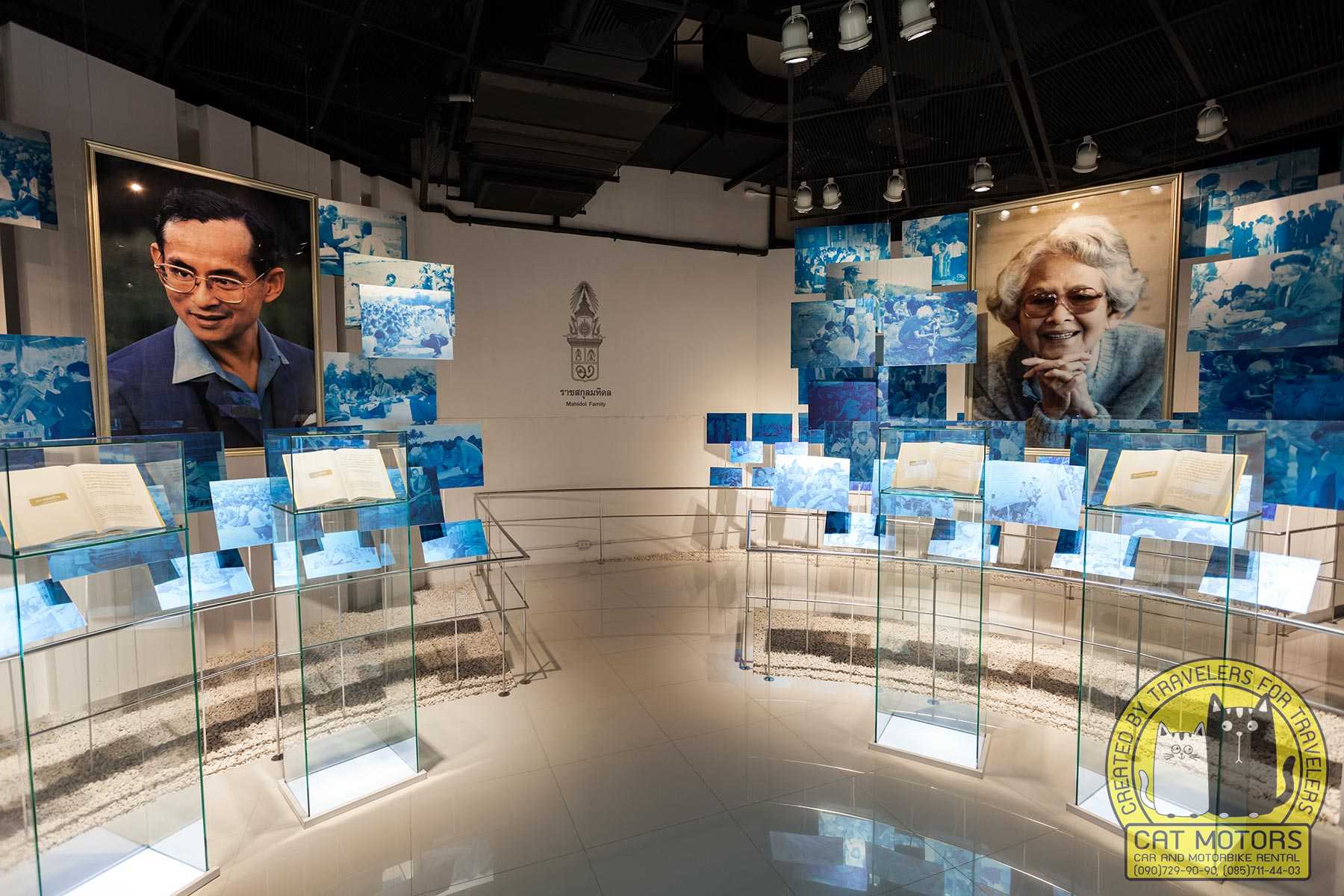
With commitments to his country and as a member of the Mahidol royal house, Phumibol Adulyadej must leave his simple, free and comfortable life and return to his homeland to take on the great task of King of the People in times of crisis.
Exhibit 4: The People’s Suffering
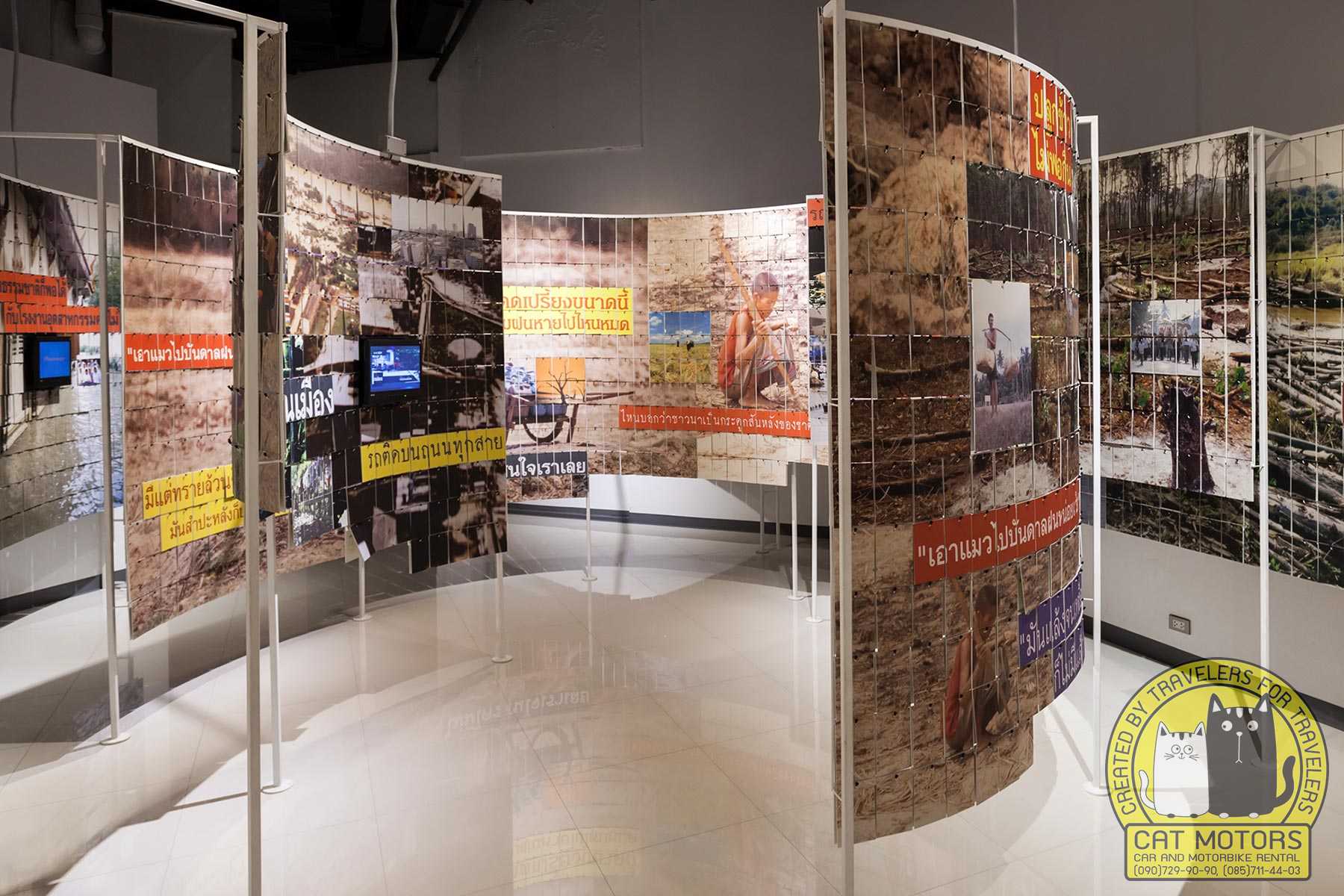
The ascension to the throne had not been easy. It was but the beginning of a lifelong task to endlessly work for the betterment of the land, because “problems never take holidays” and there are problems to be found everywhere.
Exhibit 5: Plan to Resolve the People’s Suffering Sustainably
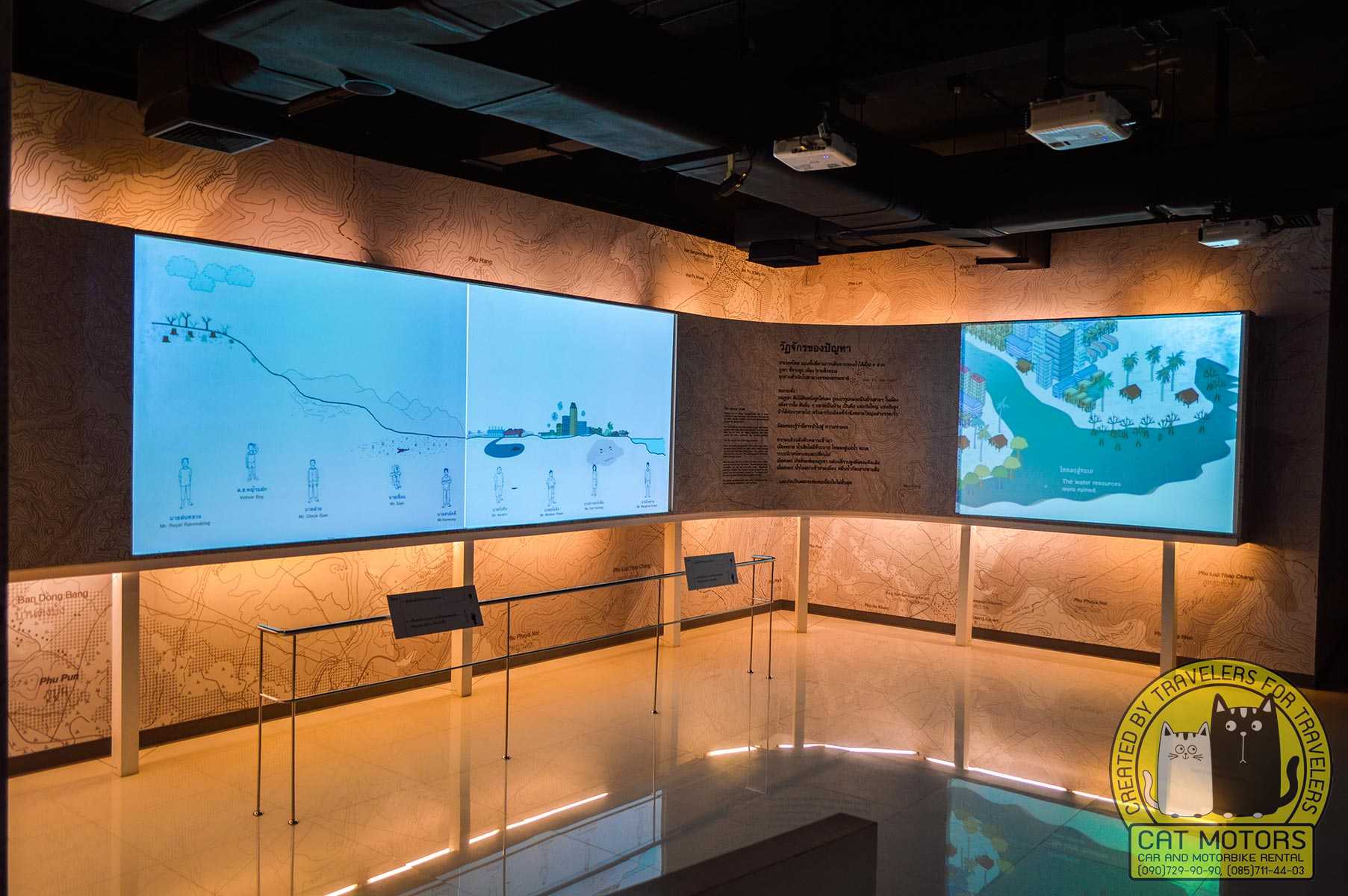
His Majesty King Bhumibol used the most common tools in his work until they became commonplace, such as maps, radios, pencils, and cameras. Their simplicity and convenience reflected the principles of the king’s work, which he used to solve the problems of the Thai people living in the hills, highlands, lowlands, and coasts. Visitors will enjoy the “shadow animation” technique of explaining complex topics understandably.
Exhibit 6: Plan to Resolve the People’s Suffering
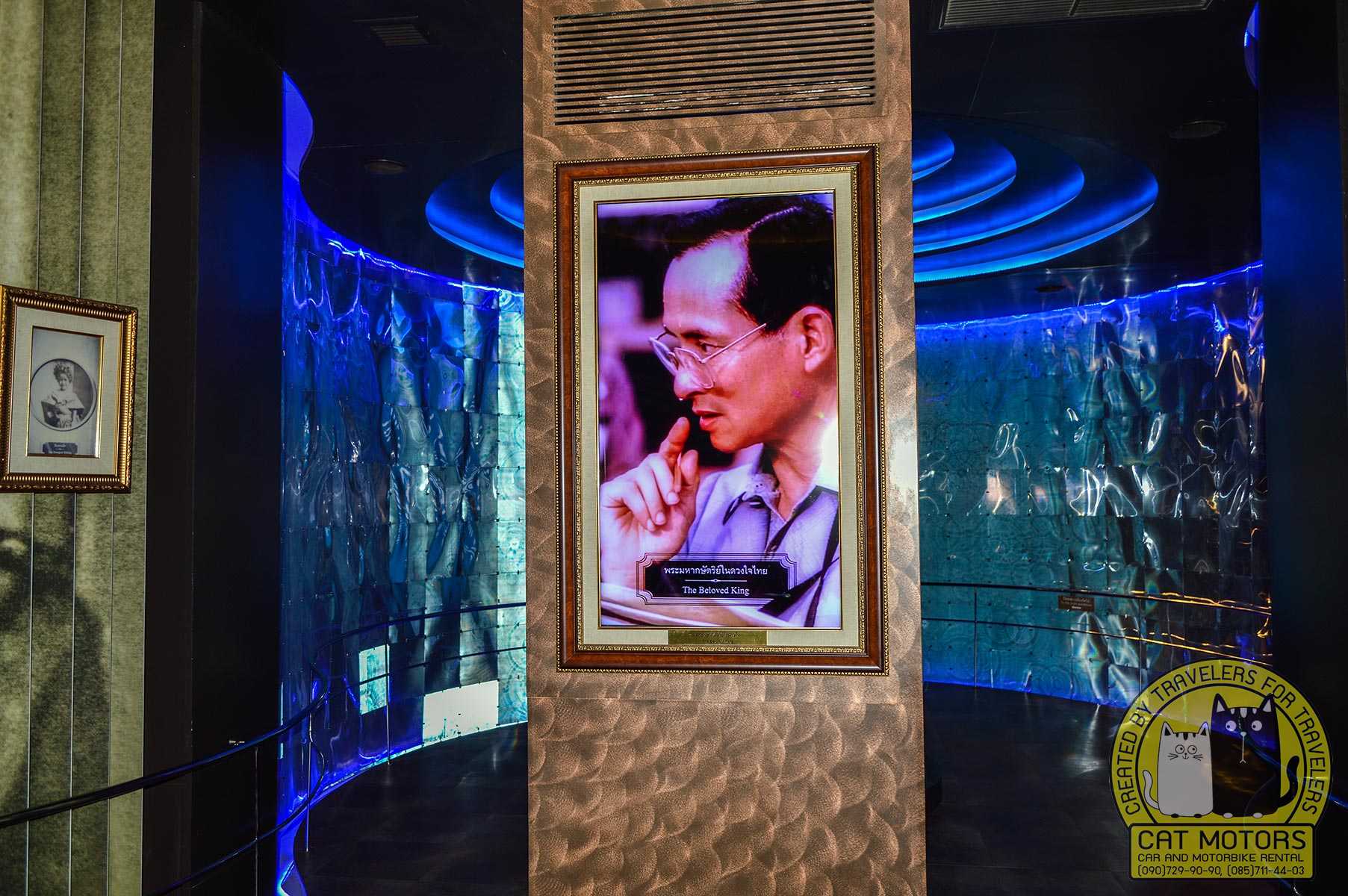
When the Princess Mother turned 87, she commissioned the Royal Development Project to solve problems in the Golden Triangle area (where the borders of Thailand, Laos, and Myanmar meet) in a short time. As part of the “Growing Forests, Growing People” ideology, she studied King Bhumibol’s projects and adapted these development projects for use in the mountains. These projects are known as Mae Raen Jak Look (a mother learns from her child). As a result, the forests and the people of Doi Tung have returned to a sustainable and dignified life.
Exhibit 7: Hall of Inspiration
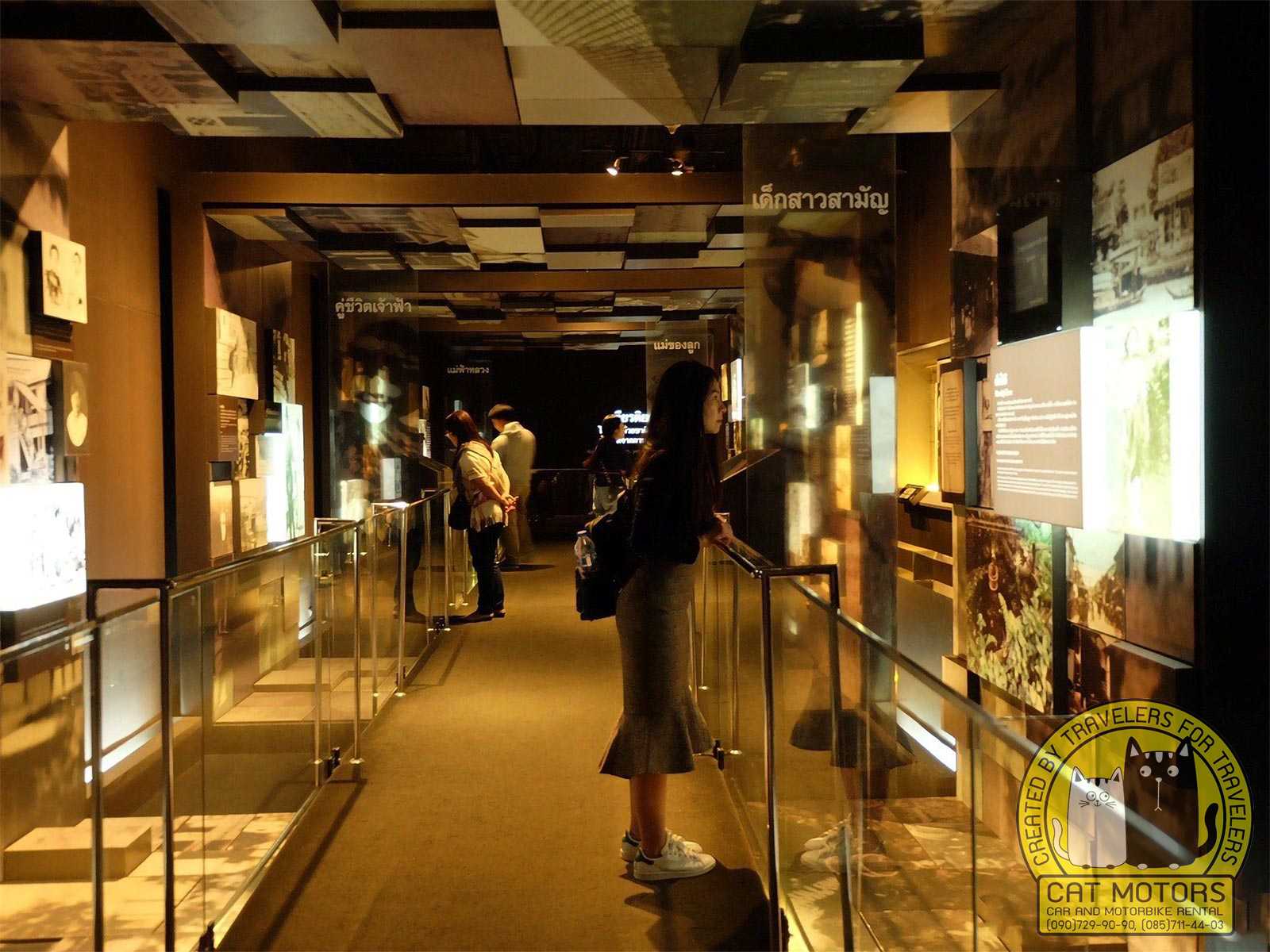
The inspiration with which the members of the Mahidol Royal House treat each other has led to the resolution of countless problems and caused a number of positive changes in the country.
Opening Hours
Every day 08:00 AM – 05:00 PM
Entry Fee: 50 THB
Mae Fah Luang Arboretum
The Mae Fah Luang Arboretum is located on Doi Chang Mub mountain, about 1 kilometer from the temple. It is located near the Thai-Myanmar border and features a variety of rare and native plants, especially various species of rhododendrons from different countries, wild Himalayan cherry, native orchids and lady’s slipper orchid.
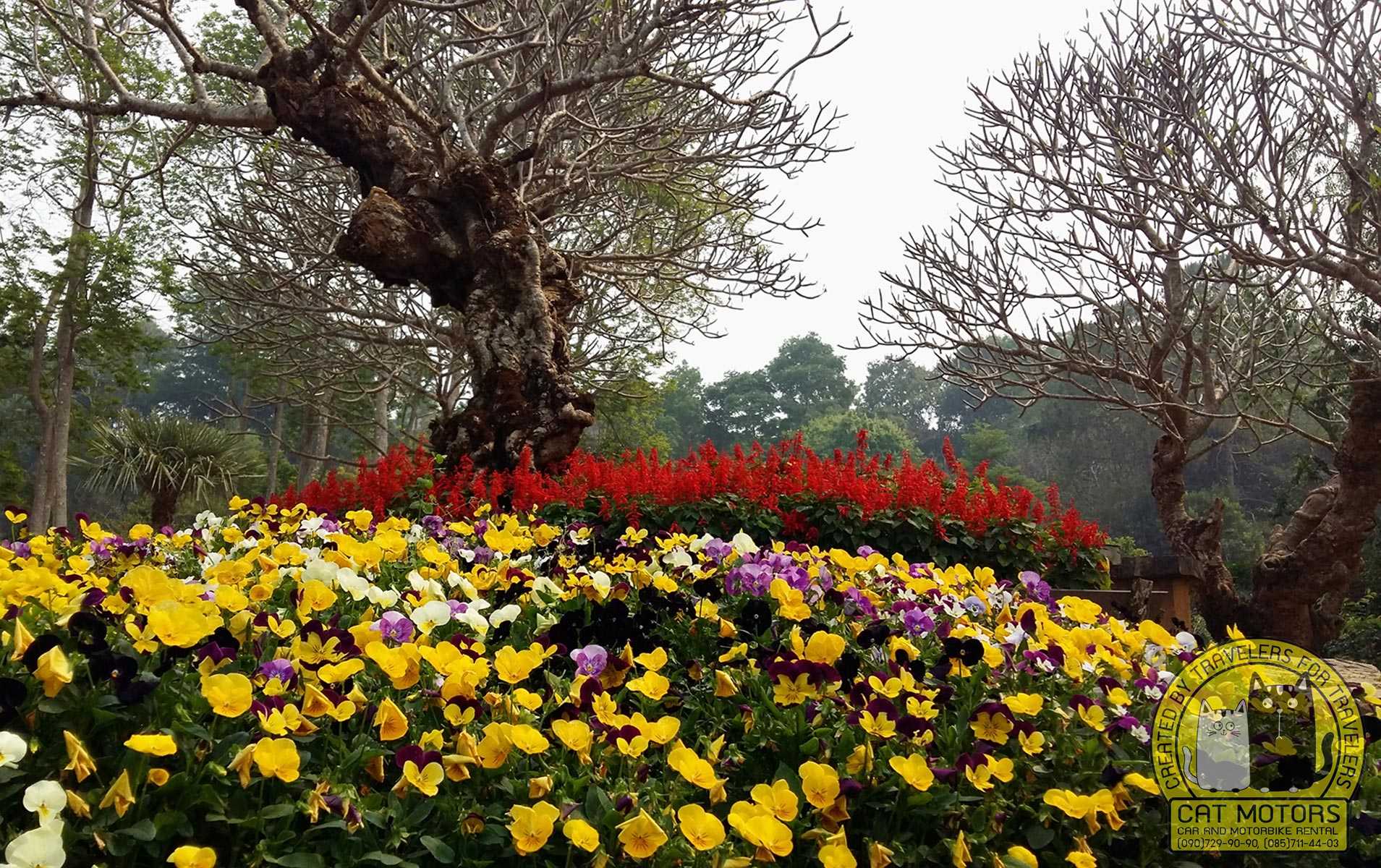
There is also a nature trail among pine trees that winds along the slopes of the mountains and a patio to enjoy the surrounding scenery, which includes views of neighboring countries and the Mekong River.
The views are most beautiful in January and February when the wild Himalayan cherry trees bloom, making it one of the most beautiful arboretums in Thailand.
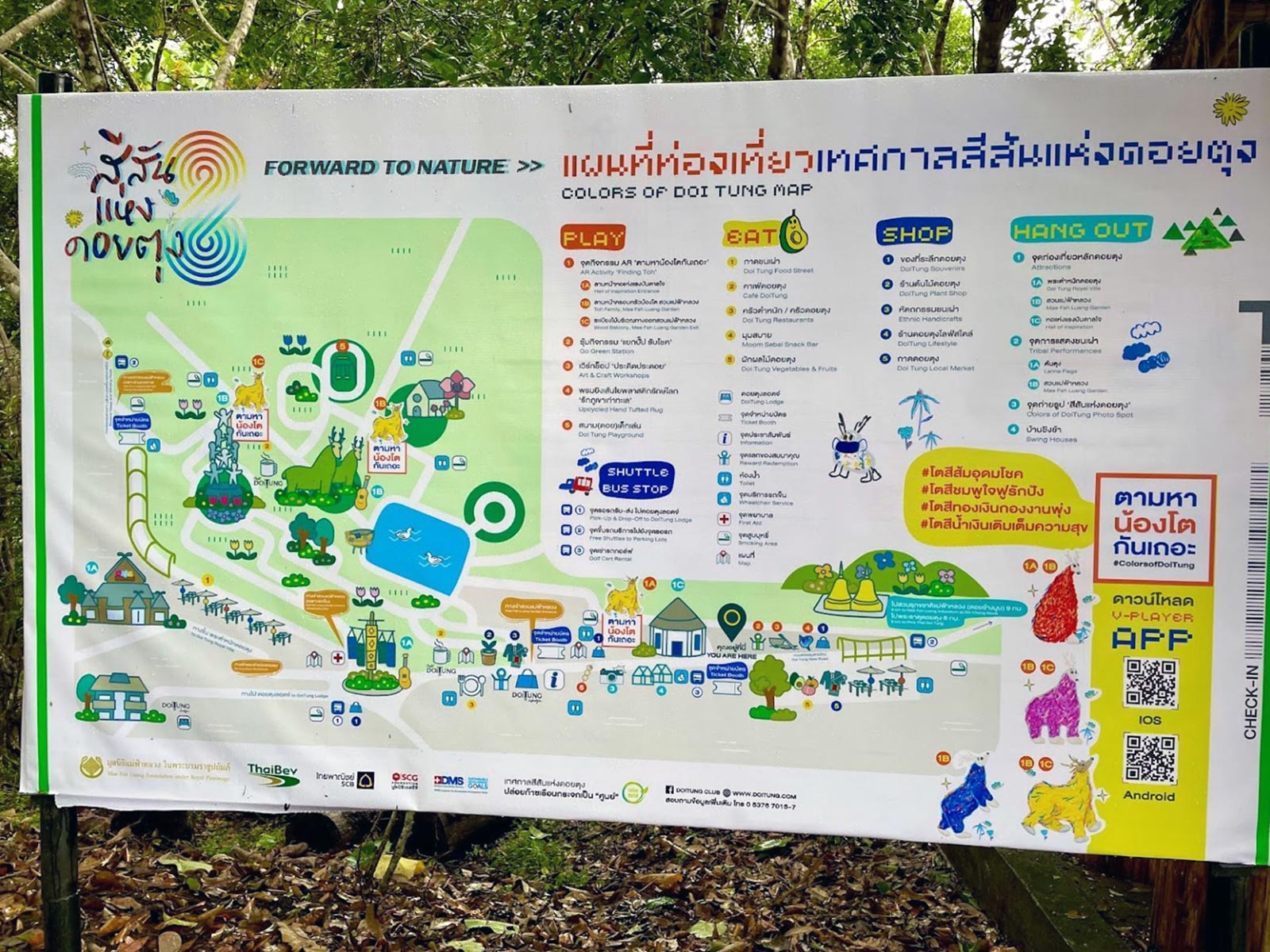
Within the arboretum is the Chang Mub Stupa, a small chedi perched on a big rock that resembles a hunched elephant. There are also pine trees and large trees of other species more than a hundred years old. Many of these trees were uprooted during the construction of the Chiang Rai-Mae Sai road and moved to this site to prevent soil erosion and preserve water sources in the area.
Opening Hours
Every day 08:00 AM – 05:00 PM
Fee: 50 THB
Admission Ticket Packages
In addition to single admission tickets at each location, there are also ticket packages that include 3 – 4 places, which will be cheaper than buying individual tickets.
3 locations package
Doi Tung Palace, Mae Fah Luang Garden, and Hall of Inspiration
Ordinary visitors – 190 THB, elderly people and students – 90 THB
4 locations package
Doi Tung Palace, Mae Fah Luang Garden, Hall of Inspiration, and Mae Fah Luang Arboretum (Rhododendron Garden)
Ordinary visitors – 220 THB, elderly people and students – 110 THB
Wat Phra That Doi Tung
Wat Phra That Doi Tung are two golden twin chedis standing side by side on the top of a mountain, erected hundreds of years ago. You can admire the scenery beyond, while enjoying the cool breeze blowing from where the chedis are located.
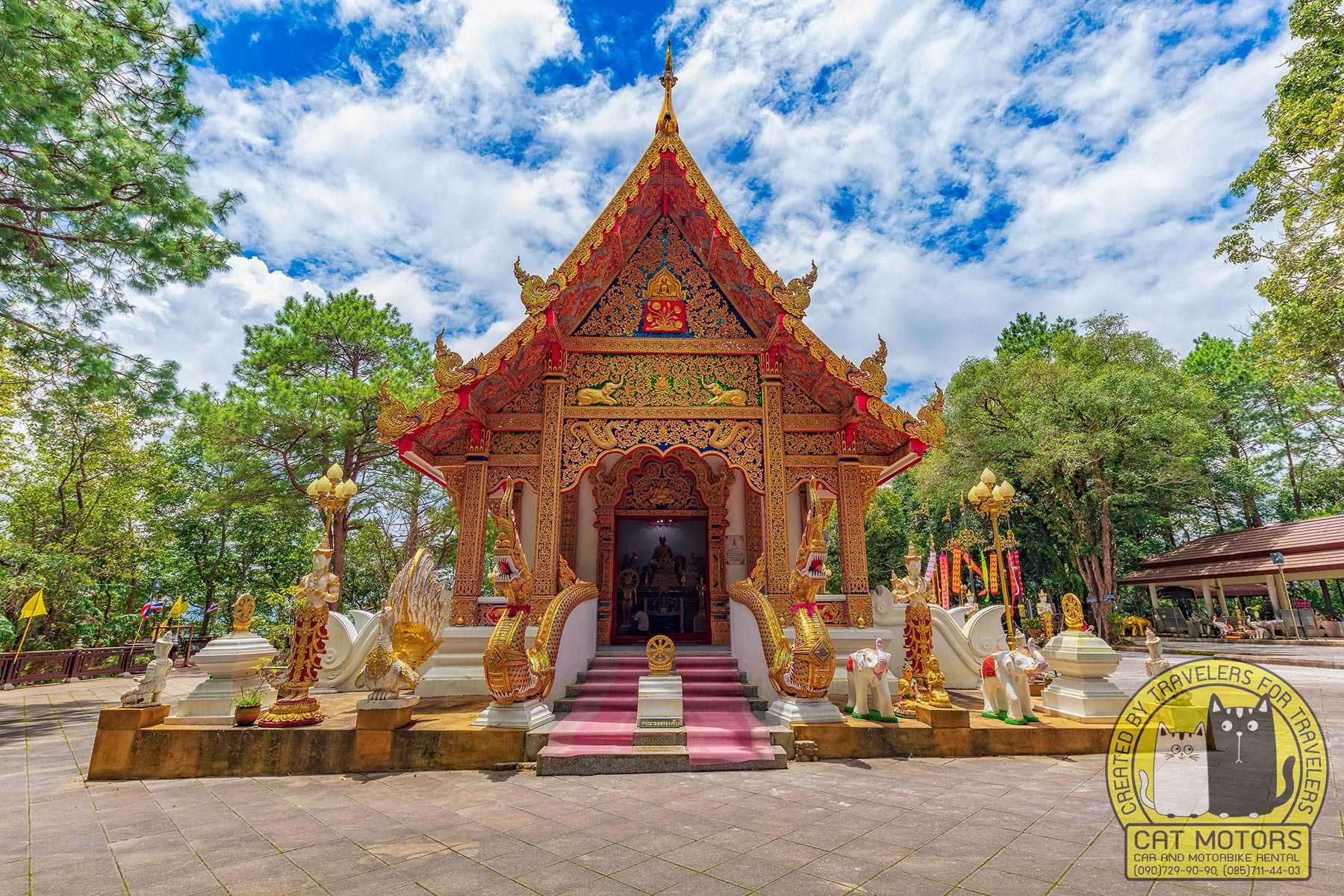
According to legend, the temple was built during the reign of Phaya Achutharat, king of Yonoknakphan (present-day Mae Chan district). At that time, one of the Buddha’s 10 great disciples, Mahakashyapa, came from India, brought several pieces of the Buddha’s collarbone and gave them to Phaya Achutharat, who ordered that a temple be built so that the relics could be kept on the mountain top, as the Buddha had willed. Phaya Achutharat ordered a flag (Thung in Thai) of 1,000 square wa (4,000 square meters) to be woven and then installed on the top of the hill. According to his order, the first chedi was to be built on the side of the temple to which the wind would blow the raised flag. In addition, Phaya Anutcharat gave Laos gold ingots as payment for the land and entrusted the local hill tribes to take care of the temple.
Later, during the reign of Phaya Mangrai of the Mangrai dynasty, Phra Maha Vachirapotera brought another 50 Buddha relics to present to Phaya Mangrai, who commissioned a second chedi to be built next to the first. There have been two chedis ever since.
Inside the temple is Roi Pak Tung, a crack in the ground about 1 foot long. It is believed that the flag’s planting more than 1,000 years ago caused this crack.
Phra That Doi Tung is a sacred place of the Lanna people where religious ceremonies are held every year on the day of the full moon of the third lunar month (Māgha Pūjā) to worship the relics of the Buddha. It is also considered a temple for those born in the year of the Pig, who often visit the temple believing it will bring them good fortune.
Doi Tung Tree Top Walk
A walk among the treetops of age-old trees – what could be more exciting for nature lovers? The tree top walk, located in Mae Fah Luang Garden, is a bird’s eye view attraction where everyone can walk through the treetops on a suspended trail over 300 meters long. If you are traveling during the rainy season, your walk will be through clouds of mist! Sounds romantic, doesn’t it?
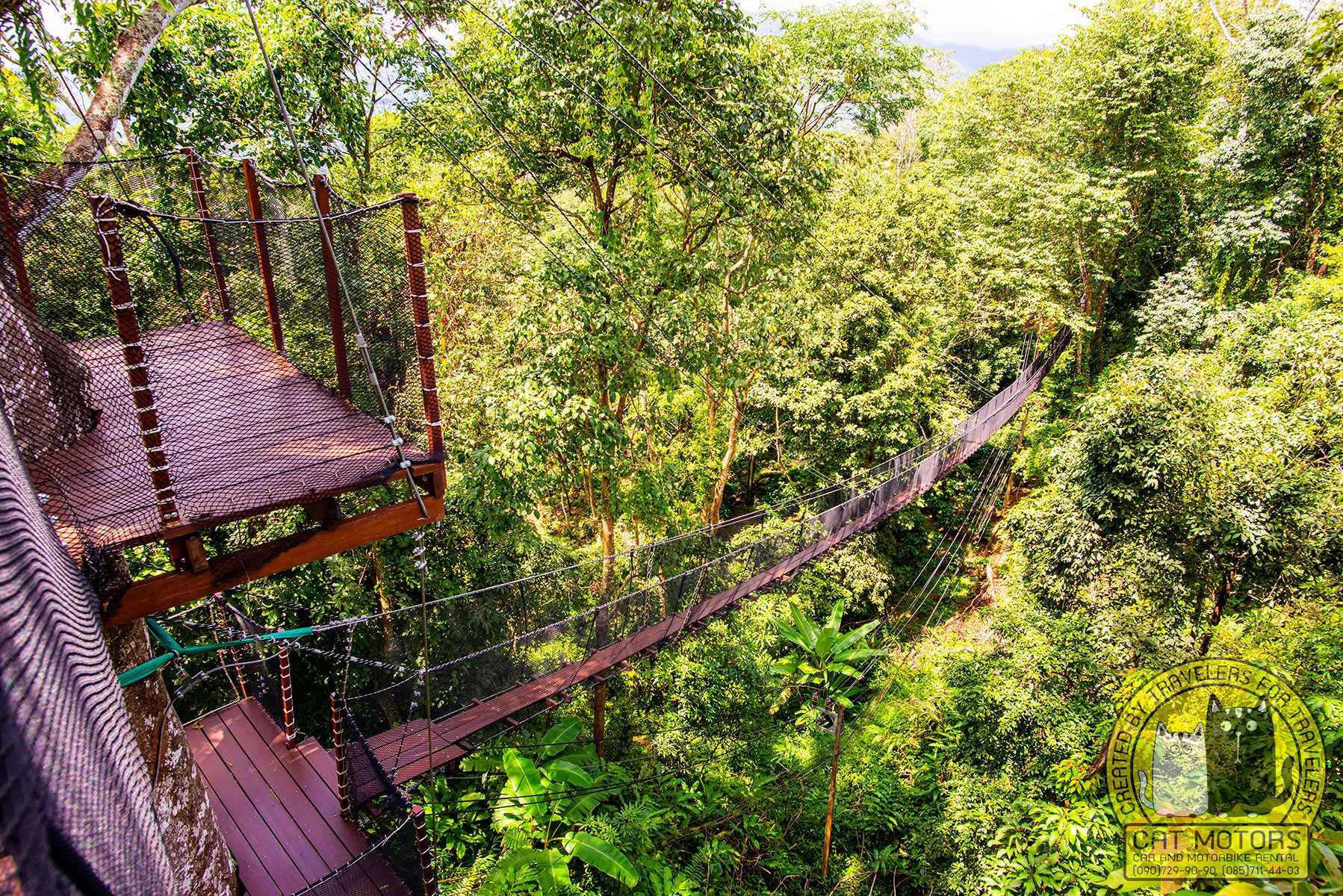
Doi Tung treetop walk is available for walks every 30 minutes, about 10 people per round. The first round starts at 8:30; the last round ends at 4:30 p.m. The walk takes 30 minutes, during which you will be taken care of by the attraction staff, who will also instruct you on how to use the equipment and the safety ropes.
The height you will ascend on this trail ranges from 10 to 40 meters. This is not just one course. Some parts of the trail are easy to climb, but some are very steep and challenging.
Doi Chang Moob Military Outpost
A magnificent viewpoint with breathtaking views of neighboring Myanmar, nestled among the fortifications, is a must-see and photo opportunity.
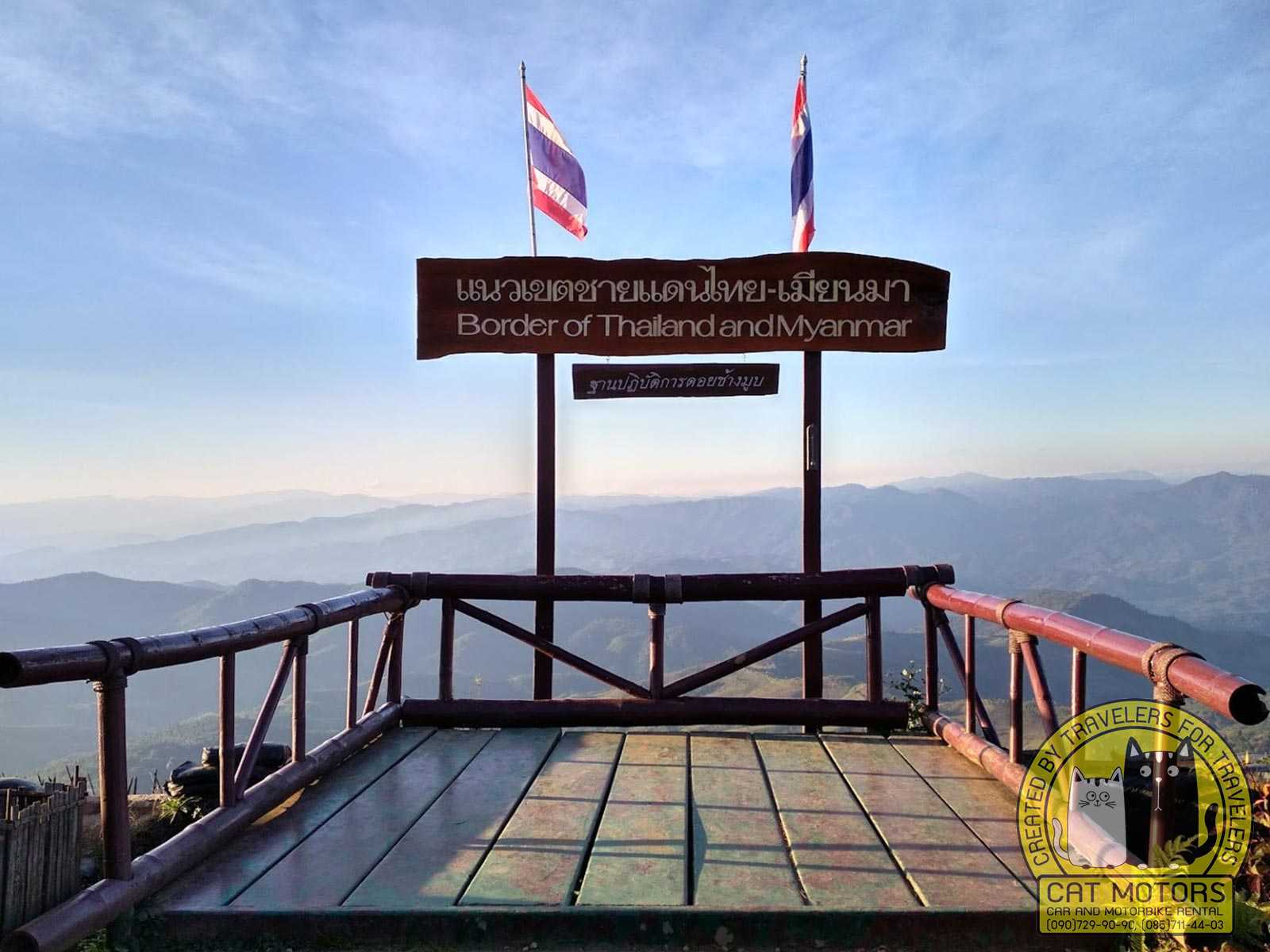
Weather
The weather in these places is relatively stable and without sudden temperature changes. The average temperature, fluctuating during the day between 20-25 degrees Celsius, makes this place very comfortable for both tourists and locals. Below you can see the weather forecast for the next 4 days.
Quick Facts About Doi Tung
- Location: Doi Tung is located in the Chiang Rai Province in the northern part of Thailand, near the borders with Myanmar and Laos.
- Elevation: The mountain rises to an elevation of about 1,389 meters (4,557 feet) above sea level.
- Royal Villa: A notable feature is the Doi Tung Royal Villa, the former residence of the Princess Mother (mother of King Bhumibol Adulyadej), built in 1987.
- Mae Fah Luang Garden: This beautifully landscaped garden covers 10 hectares and is a part of the Doi Tung Development Project initiated by the Princess Mother to promote sustainable livelihoods.
- Doi Tung Development Project: Launched in the 1980s, this project aimed at eradicating opium cultivation and improving the lives of local hill tribes through sustainable development.
- Cultural Diversity: The region is home to various ethnic groups, including Akha, Lahu, Tai Yai, and others, offering a rich cultural experience.
- Wat Phra That Doi Tung: This temple, located near the peak, is a sacred site for Buddhists, housing relics of the Buddha and dating back to the 10th century.
- Coffee and Handicrafts: Doi Tung is renowned for its high-quality Arabica coffee and unique handicrafts, including textiles and pottery, produced by local artisans.
- Climate: The area experiences a cooler climate compared to other parts of Thailand, with temperatures ranging between 5 to 25 degrees Celsius.
- Tourist Facilities: Doi Tung offers various facilities for tourists, including the Doi Tung Tree Top Walk, accommodation, restaurants, and souvenir shops.
- Accessibility: Doi Tung is accessible via road, approximately a 1-hour drive from Chiang Rai city. The journey from Chiang Mai to Doi Tung is approximately 4 to 5 hours by road, depending on traffic and the specific route taken. This distance is roughly 200-230 kilometers, offering a scenic drive through the northern Thai countryside and mountainous regions. Travelers often opt to rent a car or take a bus for this trip, enjoying the picturesque views along the way.
- Conservation Efforts: The region is a model for successful reforestation and conservation efforts, with a significant increase in forest cover since the inception of the Doi Tung Development Project.
- Cafe Doi Tung: This popular café offers a scenic view of the surrounding landscape and serves coffee and snacks made from locally sourced ingredients.
- Tourism Impact: Tourism plays a significant role in the local economy, with visitors contributing to the sustainability of the development projects through their patronage.
- Annual Events: The area hosts various cultural events throughout the year, including the Doi Tung Festival, which celebrates the region’s cultural heritage.
YT Video Review
This review is in Thai, but it is exciting and informative.
FAQ
Yes, Doi Tung is worth visiting. The area is home to beautiful scenery, an abundance of wildlife, and a variety of activities such as trekking, bird watching, and visiting local villages. Additionally, the Doi Tung Development Project has helped to create a vibrant local economy, making it a great place to shop for unique, locally-made products.
Doi Tung is known for being the home of the Doi Tung Development Project, an initiative of the late Princess Mother of Thailand, which has been credited with transforming the area from a drug-producing region to a sustainable, self-sufficient community.
Coffee from Doi Tung is famous among Thais for its high quality, sustainable farming practices, cultivation in the cool mountain climate, and use of natural fertilizers. Additionally, the Doi Tung Development Project has helped to create a local market for the coffee, making it more accessible and affordable for Thai consumers.
You can buy coffee beans on their website at https://shop.doitung.com/en/ There you can also purchase delicious macadamia chocolate-nut spreads and clothes made by the hands of local artisans from hand-woven fabrics.
Products produced in Doi Tung include coffee, macadamia nuts, tea, honey, and handicrafts. The Doi Tung Development Project has also helped to create a variety of other products such as herbal medicines, textiles, and processed food items.
Depending on your interests and the activities you want to do, you could spend anywhere from one to five days in Doi Tung. You could take a day to explore the local villages and markets, a day to go trekking and bird watching, and a day to visit the Doi Tung Development Project.
The average temperature in Doi Tung ranges from 15 to 25 degrees Celsius (59 to 77 degrees Fahrenheit). The temperature can drop to as low as 5 degrees Celsius (41 degrees Fahrenheit) during the winter months.
The rainy season in Doi Tung typically begins in mid-May and lasts until mid-October.
The best time to visit Doi Tung is during the dry season, which runs from November to April. This is when the weather is warm and sunny, making it ideal for outdoor activities such as trekking and bird watching.
The temple was constructed in the 10th century, and two further renovations were carried out by King Mengrai of Chiang Rai in the 13th century and the respected monk Khru Ba Siwichai in the 20th century.
It is free if you want to travel to this place without visiting the main sights (Royal Villa, Hall of Inspiration, Mae Fah Luang Garden). But if you’re going to see the above attractions, the ticket price ranges from 190 to 220 baht.
You can find several hotels and guest houses within driving distance (5-15 minutes to the royal palace). If you choose budget accommodation, we recommend staying at Doi tung Hengthana Homestay, where room rates start at 600 baht per night. If you prefer more comfortable accommodation, then check into Doi Tung Lodge where prices start at 2500 baht.
Unveil the charm of Northern Thailand by following our well-crafted travel guides, which highlight the most scenic routes and must-visit spots. To kick off your adventure, check out our motorcycle rentals in Chiang Mai. Also, review our rental terms to make your trip smooth and enjoyable. This way, you’ll be set to explore the region’s stunning views and cultural sites with ease. Dive into Northern Thailand’s beauty with the confidence of being well-prepared.
Additionally, our advice sections provide detailed information on the best times to travel, how to interact with locals, and what to do in an emergency. These insights will help you navigate your trip safely and make the most of your Northern Thailand adventure.
- Author: Natcha Lindberg
- Updated: 16/09/2025
- No Comments




